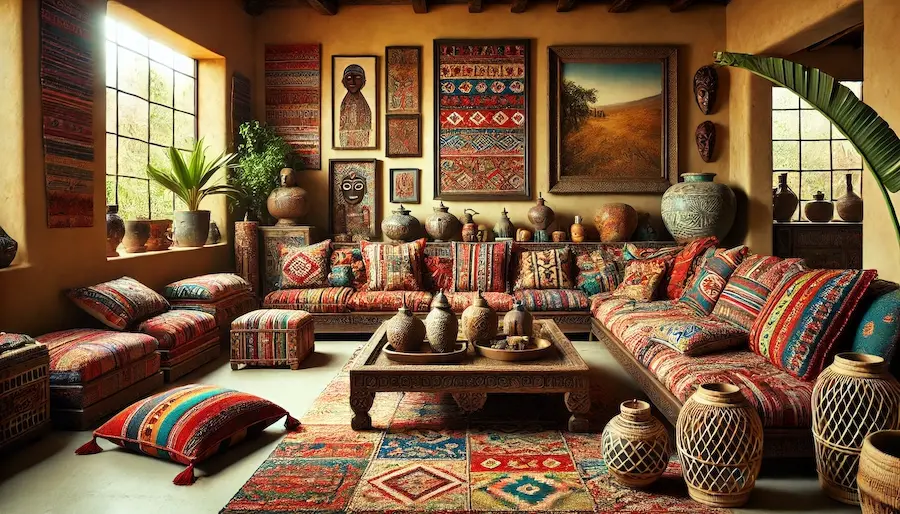An ethnic living room design incorporates elements from various cultures to create a space rich in diversity and personal expression.
History and Origins of Ethnic Design
Ethnic interior design draws inspiration from traditional aesthetics across the globe, including African, Asian, Middle Eastern, and Latin American cultures. This style gained prominence as global travel and cultural exchange increased, allowing homeowners to incorporate diverse artistic expressions into their living spaces. The result is an eclectic and personalized environment that reflects a tapestry of cultural influences.
Key Features of an Ethnic Living Room
- Cultural Artifacts: Incorporate items such as African masks, Asian ceramics, or Middle Eastern textiles to introduce authentic cultural elements into the space.
- Bold Patterns and Textiles: Utilize vibrant patterns in rugs, cushions, and upholstery, drawing from traditional designs like ikat, kilim, or batik to add visual interest and texture.
- Natural Materials: Employ materials such as wood, rattan, and stone to ground the design in natural elements, enhancing the room’s warmth and authenticity.
- Handcrafted Furniture: Select furniture pieces that showcase artisanal craftsmanship, reflecting the traditional methods of various cultures and adding uniqueness to the space.
- Earthy Color Palettes: Incorporate warm, earthy tones like terracotta, deep reds, and ochres to evoke a sense of global influence and create a cozy atmosphere.
Applications of Ethnic Design in Living Rooms
- Accent Walls: Create a focal point by adorning a wall with ethnic-inspired wallpaper or tapestries, introducing cultural motifs that enhance the room’s character.
- Layered Textiles: Drape throws, arrange cushions, and layer rugs featuring diverse patterns and textures to add depth and a sense of global travel to the living room.
- Eclectic Decor: Display a curated mix of decor items from different cultures, such as Moroccan lanterns, Indian carvings, or Japanese pottery, to tell a story of worldwide exploration.
Considerations When Designing an Ethnic Living Room
- Cohesiveness: While incorporating diverse elements, maintain a cohesive look by selecting a unifying color scheme or theme to prevent the space from feeling disjointed.
- Authenticity: Choose genuine artifacts and materials to honor the cultures represented, ensuring the design is respectful and authentic.
- Balance: Strike a balance between ethnic elements and contemporary design to create a harmonious space that feels both exotic and comfortable.
Conclusion
An ethnic living room design celebrates cultural diversity through the thoughtful integration of artifacts, patterns, and materials from around the world. By focusing on authenticity, cohesiveness, and balance, you can create a space that reflects a rich tapestry of global influences, offering both visual intrigue and a welcoming atmosphere.
